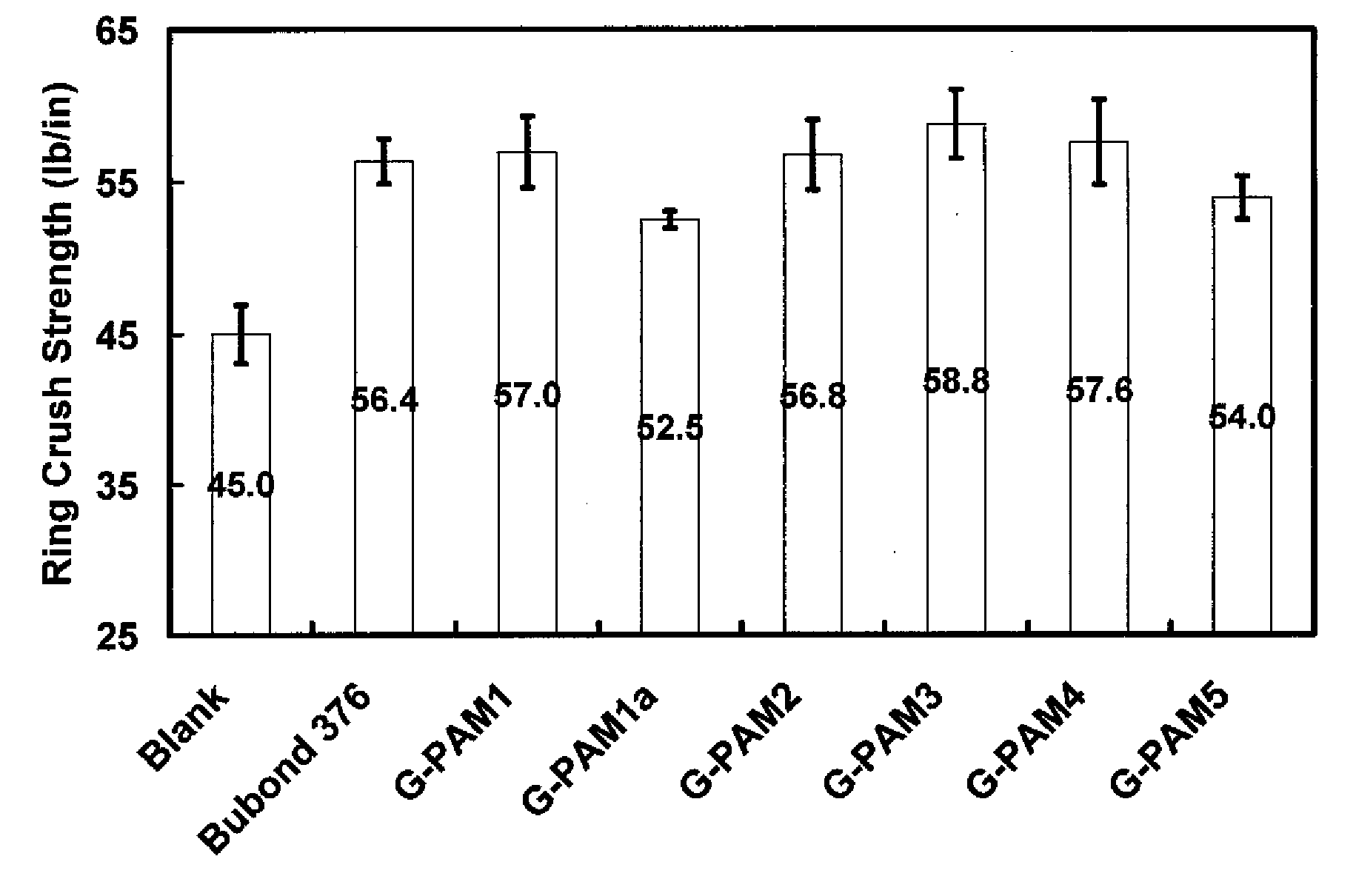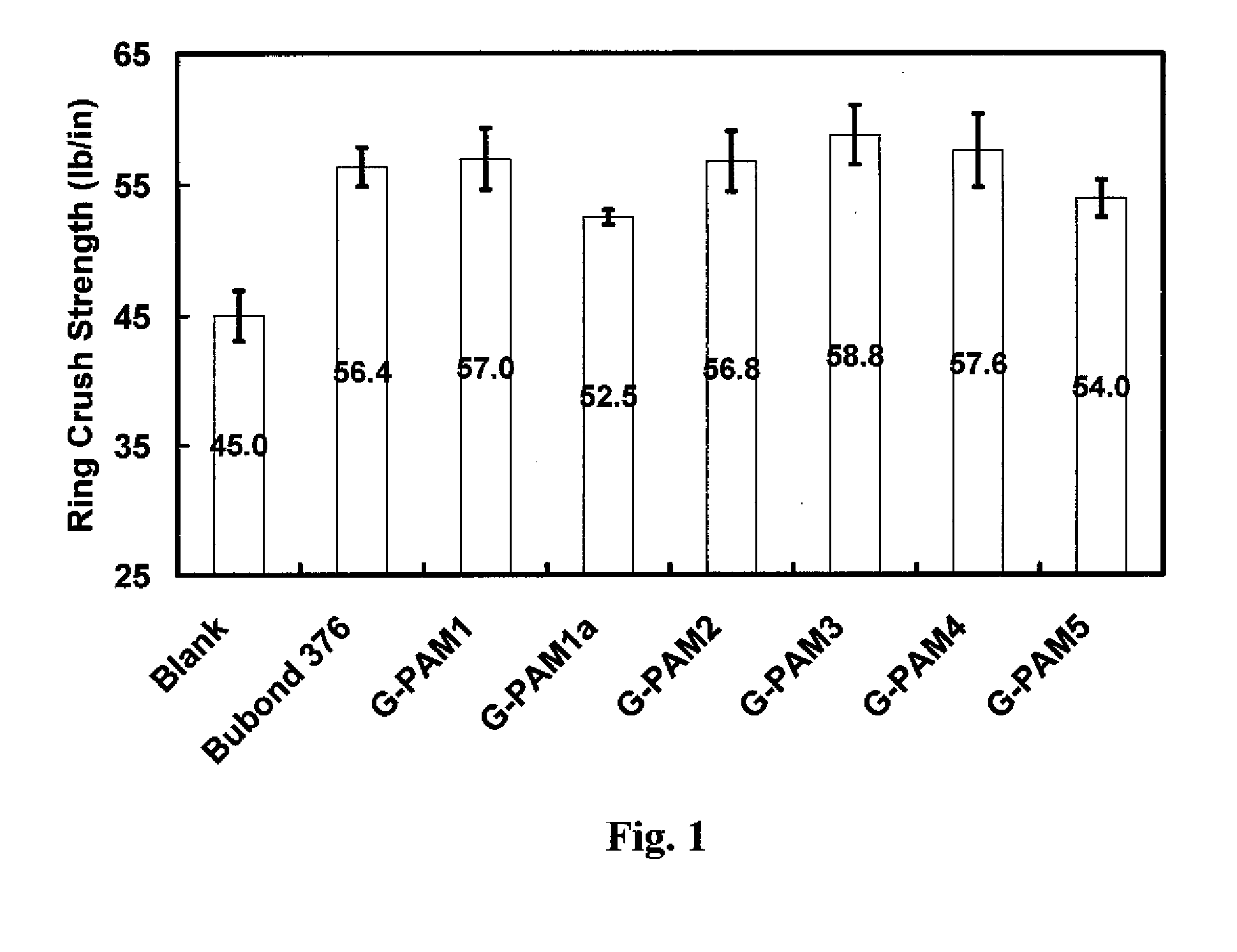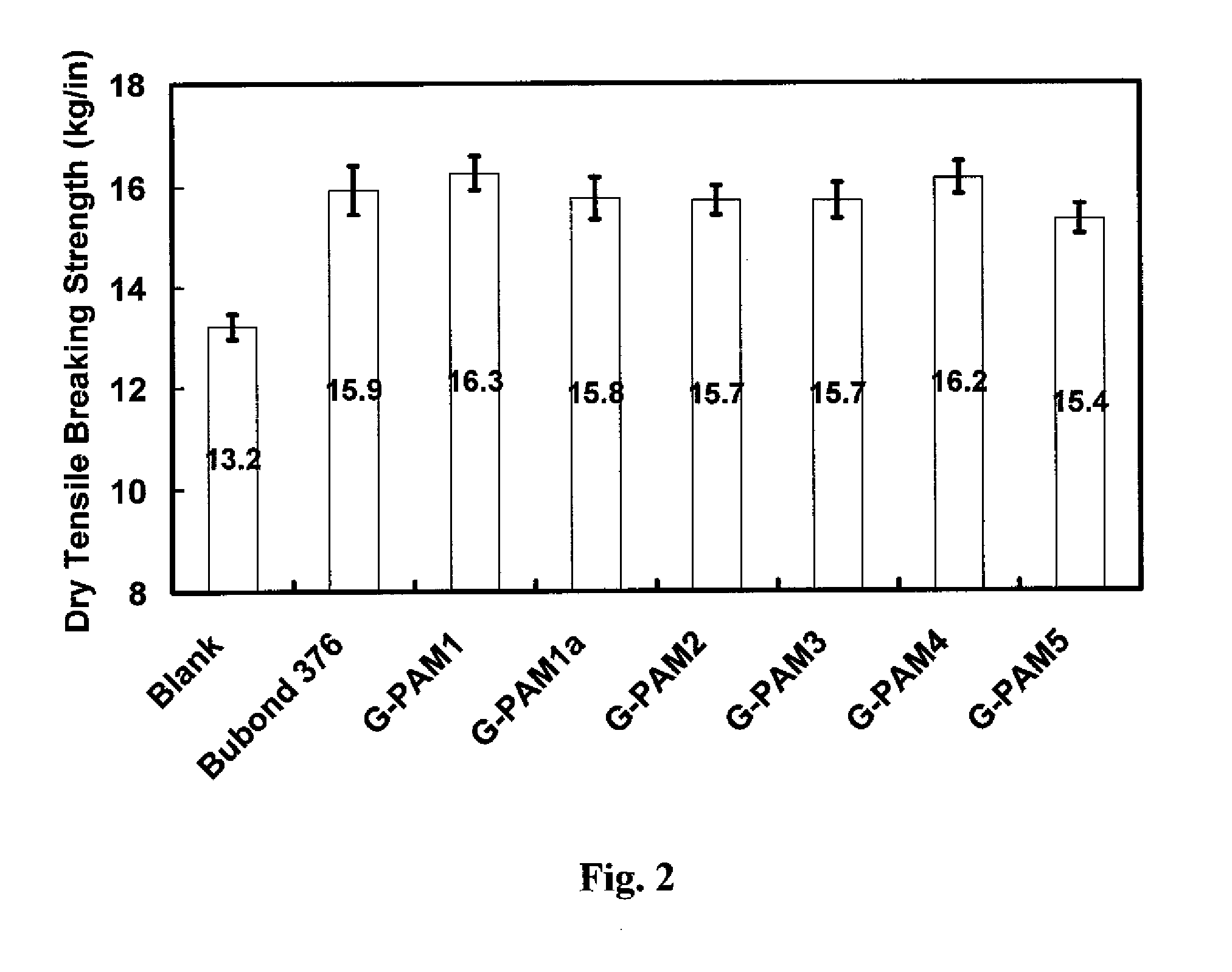High Solids Glyoxalated Polyacrylamide
a polyacrylamide and high solids technology, applied in special paper, textiles and paper after-treatment, special paper, etc., can solve the problems of shortened product shelf life, inability to dry into glyoxalated polyacrylamide, and continued cross-linking of the base polyacrylamide molecules
- Summary
- Abstract
- Description
- Claims
- Application Information
AI Technical Summary
Benefits of technology
Problems solved by technology
Method used
Image
Examples
example 1
Synthesis of Polyacrylamide Base Polymers
[0057]Into a reaction vessel equipped with reflux condenser, stirrer, and thermometer were added with water, sodium formate, and diallyldimethylammonium chloride. This portion of diallyldimethylammonium chloride added in the beginning of the reaction is referred to herein as “DADMAC 1,” a 64% by weight aqueous solution of DADMAC. The vessel was then heated to 80° C. and maintained at this temperature. To the vessel were slowly added acrylamide, diallyldimethylammonium chloride, and ammonium persulfate. The addition time of acrylamide and diallyldimethylammonium chloride was 190 minutes and the addition time of ammonium persulfate was 220 minutes. The acrylamide was a 50% by weight aqueous solution. The portion of diallyldimethylammonium chloride added over this 190 minute addition period is referred to herein as “DADMAC 2,” also a 64 wt % aqueous solution of DADMAC. The reaction mixture was then heated at 80° C. for an additional one hour and...
example 2
Glyoxalation
[0058]The glyoxalation of the base polymers of Example 1 was conducted in the following manner. Into a reaction vessel were added water, base polymer, and sodium pyrophosphate. After 15 minutes of mixing, the pH of the reaction mixture was increased to 8.8 using 15% NaOH solution and the temperature of the mixture was maintained at 25° C. Once the viscosity of the mixture reached 15 cp, dilution water was added and solution pH was then lowered to 3.0 immediately using 25% H2SO4. The products were stored at 4° C. until further testing. Table 2 lists the dosages of all the compounds for glyoxalation. The products of these reactions were aqueous compositions containing the glyoxalated polyacrylamide polymers as active content therein.
TABLE 2Glyoxalation dosages.GlyoxalSodiumWaterBase polymer(40%)PyrophosphateDilutionFinal activeProduct(g)(g)(g)(g)watercontent (wt %)G-PAM137080 (Base polymer1)183.545 7.5%G-PAM1a12447 (Base polymer1)10.41.51711.5%G-PAM212447 (Base polymer2)10...
example 3
[0059]Paper handsheet preparations and tests were conducted with the glyoxalated polymer products of Example 2 as follows.
[0060]Handsheet Preparation.
[0061]Pulp stock was post-refining recycled old corrugated cardboard (OCC) obtained from National Gypsum Company Pryor Papermaking Mill. All handsheets were prepared essentially according to Tappi standard method T205, with the following modifications. (1) 1 wt % G-PAM solution was added to 0.5 wt % OCC suspension under shearing. (2) Four three-gram handsheets were prepared in a standard handsheet mould. (3) After two wet presses, the handsheets were dried for 15 minutes in an Emerson Speed Drier (Model 130) at 105° C. 4 kg weight was kept on the drier during the drying process. (4) The obtained handsheets were conditioned in a constant humidity room (50% humidity, 23° C.) for 15 hours before testing. The dosage of the glyoxalated polyacrylamide resins was 6 lb. polymer / ton dry fiber.
[0062]Handsheet physical property tests.
[0063]Dry te...
PUM
| Property | Measurement | Unit |
|---|---|---|
| weight ratio | aaaaa | aaaaa |
| molecular weight | aaaaa | aaaaa |
| molecular weight | aaaaa | aaaaa |
Abstract
Description
Claims
Application Information
 Login to View More
Login to View More - R&D
- Intellectual Property
- Life Sciences
- Materials
- Tech Scout
- Unparalleled Data Quality
- Higher Quality Content
- 60% Fewer Hallucinations
Browse by: Latest US Patents, China's latest patents, Technical Efficacy Thesaurus, Application Domain, Technology Topic, Popular Technical Reports.
© 2025 PatSnap. All rights reserved.Legal|Privacy policy|Modern Slavery Act Transparency Statement|Sitemap|About US| Contact US: help@patsnap.com



